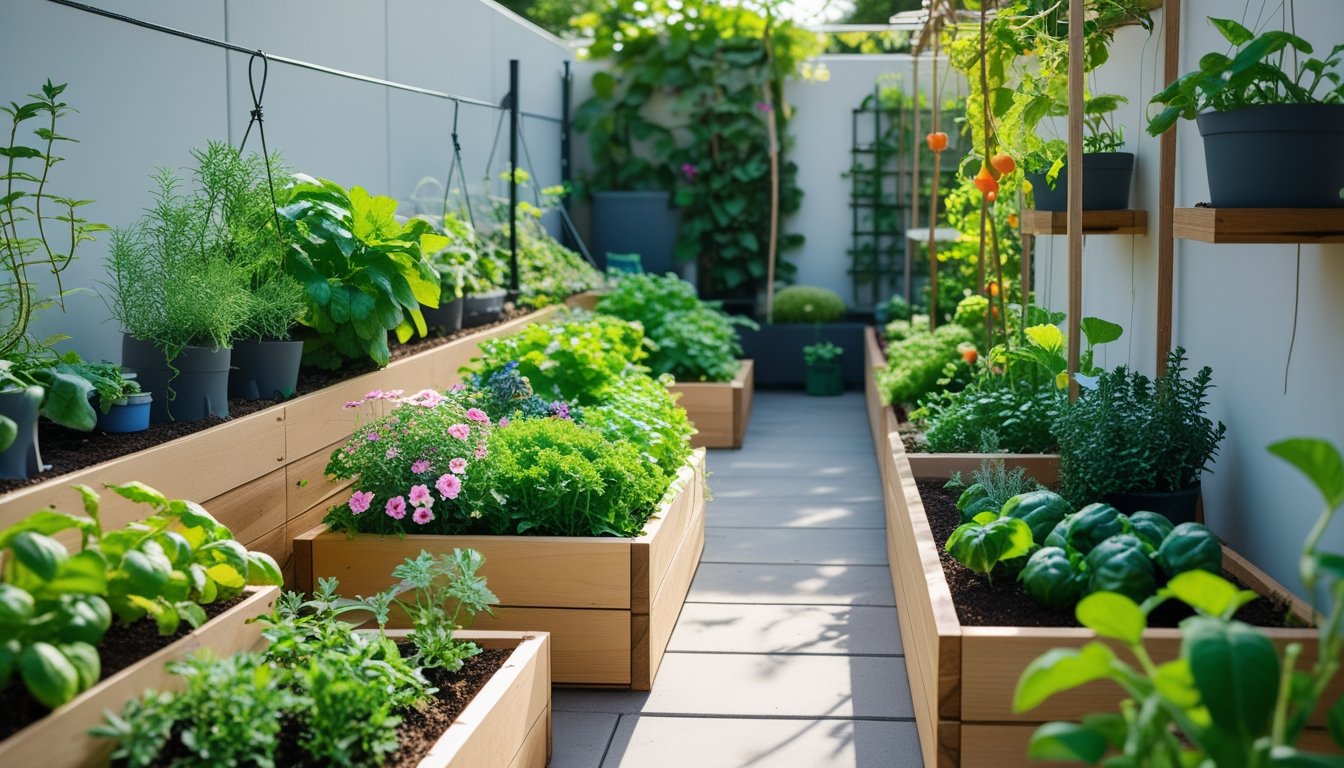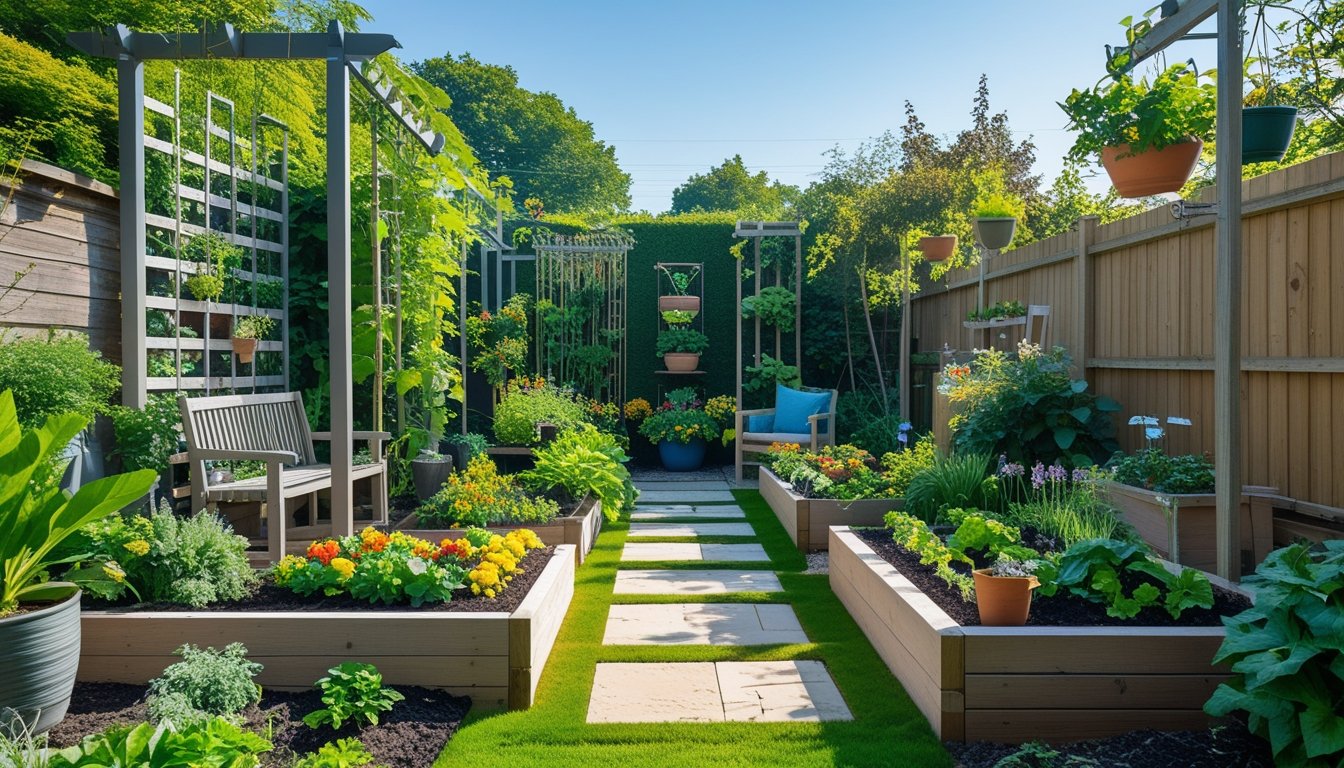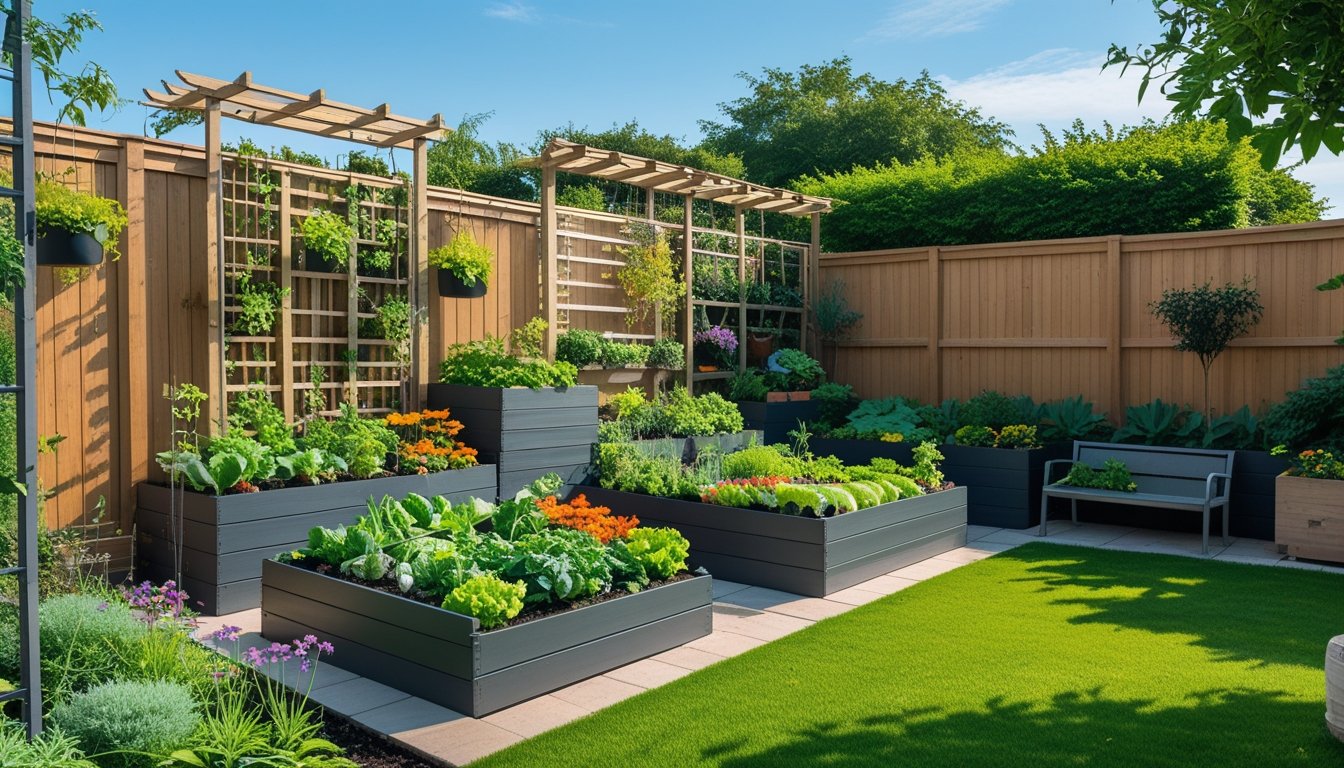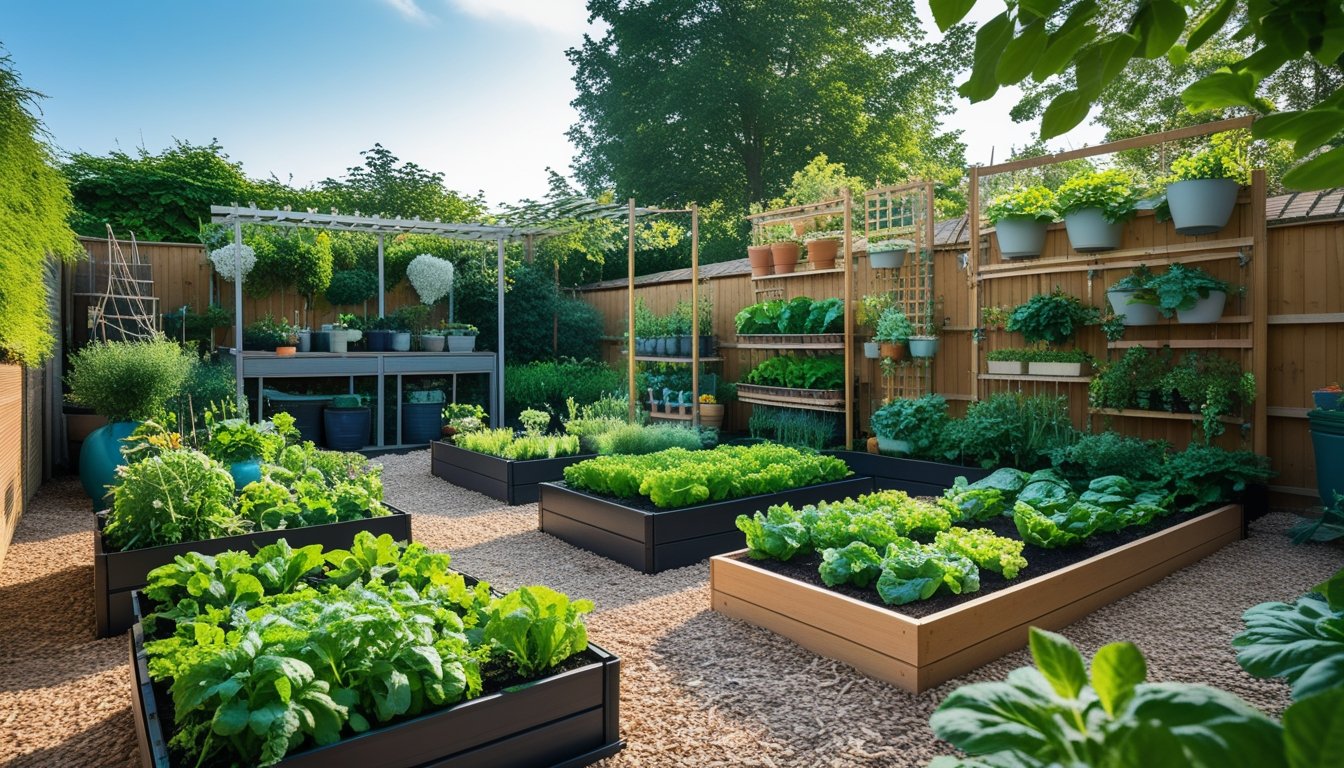Late updated: 07 Sep 2025 13:09
Written by: James Whitaker
Maximising Garden Space Without Using Water Features: Innovative Design Tips
Gardening enthusiasts understand the challenge and beauty of making the most out of limited spaces. We often think of water features as primary tools for creating interest and maximising space in a garden. Yet, there are several strategies to optimise our gardens without relying on water features, focusing instead on practical creativity. By incorporating vertical gardening and innovative planting designs, we can transform small areas into thriving, visually appealing spaces.

When we explore sustainable gardening practices, vertical gardening emerges as a powerful technique. Utilising wall-mounted planters or trellises allows us to cultivate an abundance of plants without crowding the ground space. Additionally, strategic plant selection can serve to emphasise height and depth, infusing gardens with a sense of openness and harmony.
The journey to creating a stunning garden space without water features is grounded as much in imagination as it is in design. By reimagining plant arrangements and integrating multi-levelled gardens, we embrace a form of landscape artistry that is both innovative and functional. Our gardens become not just areas for cultivation but therapeutic spaces that invite us to unwind, reflect and connect with nature.
Key Takeaways
- Vertical gardening can save ground space.
- Strategic planting enhances visual depth.
- Creative design replaces water features.
Fundamental Principles for Maximising Garden Space Without Water Features

When maximising garden space without water features, our focus should be on innovative layout designs, selecting appropriate plants, and efficient use of ground covers. These principles ensure that your outdoor space is both beautiful and sustainable, even without aquatic elements.
Smart Layout and Zoning Techniques
Creating an effective layout involves strategically planning zones within the garden to serve different functions. By using pathways made of paving stones or gravel, we can define and separate various areas. This not only enhances access but also introduces a visual structure.
Utilising raised garden beds can maximise vertical space and improve soil quality. It allows for intensive planting and easier maintenance. Rock gardens featuring ornamental grasses or succulents can add interest without requiring much moisture.
Selecting Drought-Resistant Plant Varieties
Choosing the right plants is key. Xeriscaping involves selecting plants that thrive in dry conditions, reducing water usage. Drought-resistant plants such as native wildflowers, ornamental grasses, and succulents like sedum offer vibrant aesthetics with minimal upkeep.
Incorporating these into your garden promotes sustainability. Their natural ability to retain moisture helps maintain soil quality. Additionally, these plants often attract local wildlife, enhancing biodiversity.
Utilising Pathways and Ground Covers Instead of Lawns
Replacing lawns with pathways and ground covers is a practical approach to maximise space. Gravel pathways add texture and facilitate drainage, while ground cover plants like creeping thyme and moss provide lush greenery.
These alternatives require less water, making them more sustainable. Incorporating containers with plants such as succulents or sedum can add height and variation. Such designs reduce mowing and watering, further contributing to an eco-friendly garden space.
By implementing these principles, we create a well-planned, visually appealing garden that thrives without the need for water features.
Creative Solutions for Expanding Usable Garden Space

Expanding usable garden space requires innovative approaches like utilising vertical dimensions and multifunctional areas. By incorporating elements such as living walls, flexible patios, strategic lighting, and focal points, we can transform any garden into a more expansive and visually captivating retreat.
Maximising Vertical Space with Living Walls and Trellises
Vertical space is often underutilised in garden design. By adopting living walls and trellises, we can grow a variety of plants, from decorative climbing plants like jasmine, wisteria, and clematis, to practical herbs. Vertical planters or green walls provide the perfect structure for these.
Trellises are fantastic tools for vertical gardening. They offer support to climbing plants and can also serve as beautiful, fragrant partitions. A well-placed trellis offers both aesthetic appeal and privacy, creating secluded spaces within the garden. This approach enhances not only the planting area but also the overall design, making the garden feel larger and more intricate.
Designing Multifunctional Patios, Decks, and Seating
We can achieve a great deal by designing patios and decks that serve multiple purposes. Multifunctional outdoor furniture can transform seating areas into spaces for dining and relaxation. A simple pergola can provide shade during the day and a frame for lights in the evening.
Adding elements like cozy seating or a fire pit can create a welcoming environment. Using containers filled with fresh herbs or decorative plants adds both practicality and beauty. Incorporating natural stone features or flexible seating arrangements further expands usable space. These multifunctional designs allow for dynamic use, adapting to various needs and activities throughout the day.
Incorporating Outdoor Lighting and Focal Points
Effective outdoor lighting can transform a garden at night. Using string lights, spotlights, or lanterns, we can create a magical atmosphere. These not only enhance functionality after sundown but also highlight key features or focal points.
Strategically placed focal points, such as a water feature made from natural materials, or dramatic stone arrangements, draw the eye and create visual interest. These elements act as anchors in the landscape design, making the space feel more cohesive. By focusing on both lighting and focal points, we ensure the garden remains inviting and usable across different times and occasions.
Frequently Asked Questions

In creating a garden that maximises space while consuming minimal water, we consider techniques like vertical gardening, plant selection for drought resistance, and adapting layouts for shaded environments. Below, we address common queries to help you design an efficient and sustainable outdoor space.
What are effective strategies for maximising small front garden spaces?
Small front gardens can be transformed with vertical gardening methods, such as using trellises or hanging baskets. Incorporating containers of different sizes and shapes can enhance the visual appeal and functionality of the garden by making the most of limited space.
How can I design a productive garden layout in shaded areas?
Shaded spaces can still support robust growth. To make the most of these areas, select shade-tolerant plants like ferns or hostas. Arranging plants to maximise indirect sunlight exposure, and using reflective surfaces to enhance available light can lead to a thriving garden.
Can you suggest garden design ideas that don't require a lot of water?
Drought-resistant plants such as succulents or lavender need little water. Creating dry stream beds or using gravel can add aesthetic value without the water demands of traditional features. Selecting plants that store moisture efficiently can also contribute to a water-wise garden.
What are the principles of 'lines of force' in landscape design?
Lines of force guide the visual movement in garden design. By organising plants, paths, and structures to naturally direct the viewer's gaze, a garden can appear larger and more coherent. Curved lines can add interest and depth to the landscape, making it feel expansive.
How does one plan the planting design for a low-maintenance garden?
A low-maintenance garden relies on selecting hardy plants that suit the climate and soil. Using native species reduces the need for extensive care. Arranging plants in layers or groups can minimise weed growth and maintenance needs by creating a natural barrier.
Which plants are best suited for a shade garden layout in hardiness zone 5?
In zone 5, plants like hostas, astilbes, and heucheras thrive in shade conditions. These perennials are known for their resilience and ability to flourish with limited sunlight. Pairing them with companion plants that share similar requirements ensures a balanced, lush garden aesthetic.
